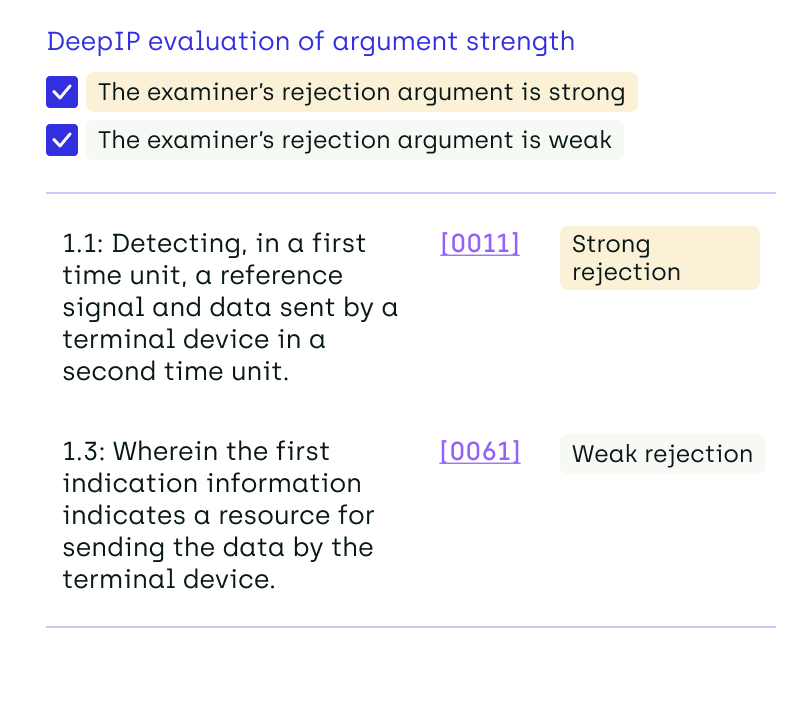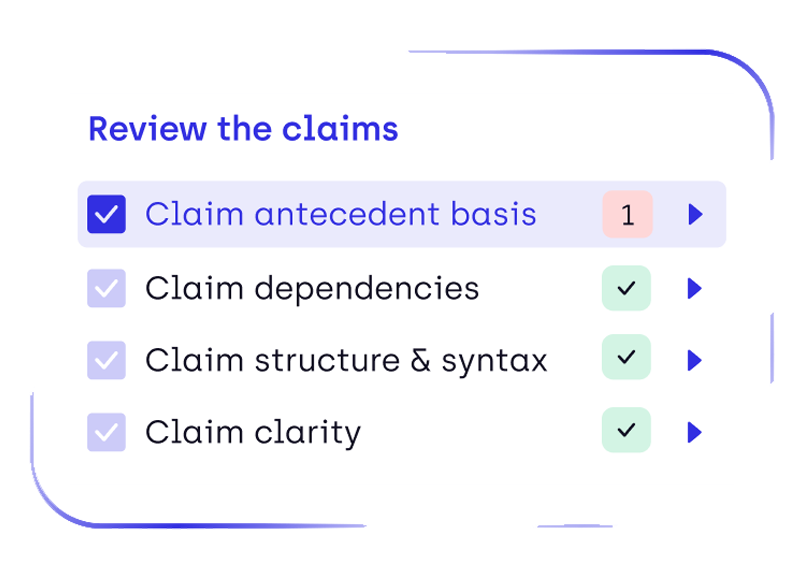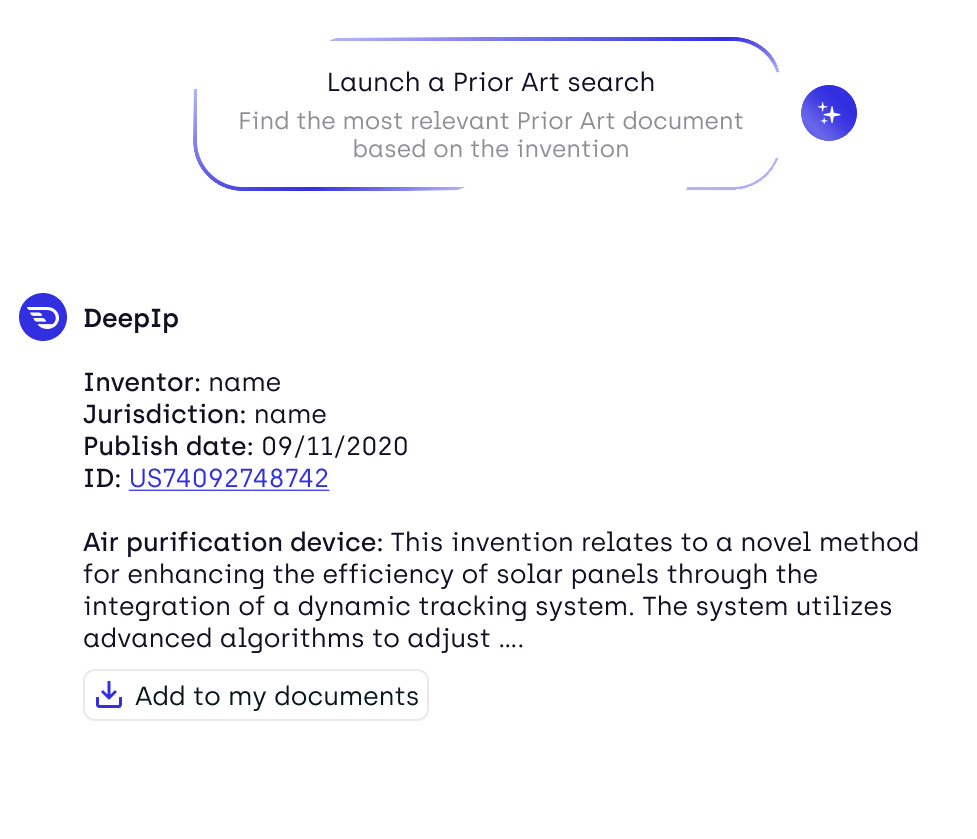Artificial intelligence is rapidly transforming intellectual property practice, offering unprecedented efficiencies for in-house IP workflows. Beyond just workflows, AI is reshaping the entire IP practice by streamlining patent drafting, prosecution, and management processes, leading to more efficient and strategic IP management. In this webinar, our panelists discuss how Philips has successfully integrated AI tools into their in-house IP workflows and what valuable lessons other organizations can learn from their experience to optimize their own IP processes.
Featured Experts
Tom Tassignon - European Patent Attorney and Head of IP Personal Health and Philips Brand Protection, as well as Head of IP Data and AI at Royal Philips. Tom directs global teams in developing and implementing IP strategies while optimizing in-house IP workflows through AI integration.
FX Leduc - An accomplished entrepreneur with over a decade of experience founding innovative tech companies. As the leader of DeepIP, the AI patent assistant based in New York City, he collaborates with patent practitioners to transform in-house IP workflows through intelligent automation.
Gene Quinn (Moderator) - Patent attorney and leading commentator on patent law and innovation policy. Gene founded IPWatchdog in 1999 and has twice been named one of the top 50 most influential people in IP.
Enhancing In-House IP Workflows: Augmentation, Not Replacement
One of the most common questions about AI in patent practice is whether these tools will eventually replace patent attorneys in in-house IP workflows. According to Tom Tassignon, the answer is a definitive no:
“From the point of view of Philips, we think that will not be the case. We think that the true value that can be determined from IP is still done by the patent attorney. So the in-house counsel that is very well aware of the IP strategy of the company, but the AI tool is a great tool for the patent attorney to then actually extract the value from all the knowledge that in-house counsel has.”
Tom notes that while the initial amazement with AI’s text generation capabilities was high, a more realistic understanding quickly followed. The real power comes from combining AI tools with the strategic insights of experienced IP professionals to enhance in-house IP workflows.
AI tools also provide in-house teams with greater control over their IP data and processes, reducing errors and improving oversight of their IP portfolios.
FX Leduc reinforced this perspective:
“Our position since the very beginning has been to design tools that actually support the practitioners and to basically facilitate, accelerate, and make it smarter, faster in everything, but in no case to replace the attorney. We need human intelligence everywhere.”
Key Challenges in Optimizing In-House IP Workflows with AI
A poll during the webinar revealed several concerns about AI adoption in in-house IP workflows:
1.Cost and return on investment concerns (tied for first)
2.Lack of understanding of AI’s capabilities (tied for first)
3.Ethical concerns
4.Resistance to change
Tom expressed surprise at the “lack of understanding” result:
“I think the result that surprises me a little bit is a lack of understanding of AI’s capability because I think it’s up to everybody to just test the tools. And from the moment you start to implement these tools in the workflow, trying different tools, how they can deliver results in the different parts of the IP workflow, I think that lack of understanding quickly disappears when you really start to get your hands dirty and using the tools.”
Regarding cost concerns, Tom shared that Philips conducted a conservative business case analysis and found clear ROI for AI tools across multiple in-house IP workflows. FX added that clients typically see ROI between 3-10x their investment, depending on adoption levels. AI tools can help organizations save money by automating tasks, reducing errors, and streamlining operations, which leads to improved financial efficiency.
When discussing resistance to change, it was noted that resource constraints are a common challenge. The growing volume of legal work within corporate legal departments makes it even more important to manage legal tasks efficiently and adopt solutions that can handle increased demand.
{{block-cta}}
The Philips Approach to Transforming In-House IP Workflows
Getting Started with AI in In-House IP Workflows
Philips began its AI journey in 2023, evaluating various tools before implementation. Tom shared several key considerations that guided their selection process for enhancing in-house IP workflows. In particular, evaluating different software options was crucial to ensure they met the specific needs of in-house IP teams and could improve workflow efficiency:
1.Ease of Integration
“What was always important for us is that the bridge to using the tools should not be too difficult. What you don’t want is to have another tool that people have to get used to and start using the user interface. So it’s great if you can have a tool that integrates already in the tools that you’re using.”
2.Security and Confidentiality
“What we provide to the tool is of an extremely confidential nature.”
3.Hands-on experience
“I think it really needs hands-on experience because what tools deliver such as ChatGPT or any other generative AI tool there who are not trained on specific IP related materials, they just don’t deliver the same value.”
Tom emphasized that learning to effectively prompt AI tools is becoming an essential skill for patent attorneys managing in-house IP workflows, similar to how professionals had to learn to use search engines effectively in the early days of the internet.
Areas of Greatest Impact in In-House IP Workflows
Philips has found AI particularly valuable in three key areas of their in-house IP workflows:
1.Novelty searches within in-house IP workflows
“In the sphere of novelty searches, finding out whether certain invention is patentable or not. Whereas before, this was a skill specifically for IP analyst where they had to build a complex query to find out novelty of an invention. Now with generative AI tools, it becomes much more available also to IP councils.”
AI tools also help identify the most relevant information during novelty searches, ensuring decision-making is based on the most pertinent data.
2.Patent drafting as part of in-house IP workflows
“You can ask the tool very quickly: What’s the novelty? What is potential here? Draft me first claim set. And that first claim set is by far not perfect. Right? But as a patent attorney, you see those claims, you can easily identify what are the essential features here. And it gives you creativity. It triggers you to work further on that claims set, and then much more quickly go to a final claim set.”
3.Prosecution management in in-house IP workflows
“An analysis of an office action from a patent office, if the tool delivers you already an analysis of the office action and whereas before you may have immediately outsourced that office action, now you use the tool to get a quick understanding of the office action.”
AI tools assist in tracking important dates and deadlines, helping ensure compliance with all filing requirements. They also help manage tight deadlines, reducing the risk of missing critical time constraints that could lead to legal or financial consequences.
Measurable Results in Optimizing In-House IP Workflows
While still in the early stages of full implementation, Philips has observed significant benefits to their in-house IP workflows:
“From our trial period when we were testing the different tools, we observed an improved efficiency about 20% for drafting and prosecution, but that’s a very conservative approach.”
Tom noted that this 20% efficiency gain in in-house IP workflows is likely conservative, especially when considering other tasks beyond drafting and prosecution where AI tools can help, such as communicating complex IP concepts to non-technical stakeholders. AI tools also assist with paying maintenance fees for patents and trademarks, helping companies manage country-specific deadlines and compliance requirements across different jurisdictions. These improvements help protect the company's IP rights by ensuring timely actions and compliance with local laws:
“These tools often allow to make a translation into, okay, what does this claim now mean? Or what is now the summary of the invention? You cannot provide an invention disclosure of 10 pages to the business leader of a particular business unit, but you can provide a 10-line summary. And that’s something that these tools can provide very quickly. Whereas before maybe you needed half an hour to draft that summary, now the tool can do that in twenty seconds.”
{{block-cta}}
How AI is Reshaping Collaboration in In-House IP Workflows
AI tools are also transforming the relationship between corporate IP departments and their outside counsel, a critical component of in-house IP workflows. Tom explained how Philips now approaches this collaboration:
"I think we can have a closer collaboration or we can get more value from the work that's delivered by the outside counsel by providing them more input. So what's the value of the in-house counsel is insights and strategy of the company. What are the directions of the company? What is the scope of protection that the company wants to achieve with a certain claim set?"
With AI tools enhancing in-house IP workflows, in-house teams can provide more strategic guidance to outside counsel:
"Whereas earlier, you would be easier to quickly outsource the office action. Now you can outsource the office action with additional value there. Some maybe some interesting information picked up from the AI assistant that gave you some guidance on 'this is what the prior art is stating. It's probably not novel because of this and this.' You can at least give direction there."
Despite these changes to in-house IP workflows, Tom believes outside counsel will continue to provide significant value:
"The added value that law firms can bring there is their deep understanding of case law, experience from litigations, maybe particular technologies that they know very well. And so I think the crucial improvements that patent attorneys from law firms can bring that would allow claims to be enforceable and of high value, I think that's still something that will remain."
Security Considerations for AI-Enhanced In-House IP Workflows
Given the sensitive nature of patent information, security is a paramount concern when implementing AI tools in in-house IP workflows. FX addressed how DeepIP handles these concerns:
"The API doesn't retain any data, and we don't use or reuse any customer data for any training or retraining purposes. Obviously, there is segregation, encryption of the accesses, local storage, where you need the data to be."
For large enterprises with heightened security requirements for their in-house IP workflows, hybrid approaches are available:
"Some of the largest clients ask for a hybrid approach where we are able to store the data within their own premise when it is at rest, while it is still processed, but stateless on our side. Meaning that the data, as soon as it is at rest, is within their own infrastructure, and there is zero retention of the data outside their own infrastructure."
Practical Advice for Implementing AI in In-House IP Workflows
Both experts emphasized the importance of proper planning and support for AI implementation in in-house IP workflows:
Don't underestimate the learning curve: FX noted that it typically takes 2-3 months for teams to become proficient with AI tools in their in-house IP workflows. He advised treating AI implementation as a strategic, transformational project with appropriate support from top management.
Start by using the tools: Tom recommended a hands-on approach for improving in-house IP workflows:
"The best way to start using the tools is actually using them." He emphasized that prompt engineering is a skill that improves with practice.
Consider the full workflow: Philips has implemented AI across a broad spectrum of in-house IP workflows beyond just drafting and prosecution, including novelty searches, IP intelligence work, and risk assessments.
{{block-cta}}
Bridging Communication Gaps in In-House IP Workflows
One particularly valuable application of AI tools that emerged during the discussion was their ability to translate complex technical and legal concepts for non-IP stakeholders, improving communication within in-house IP workflows:
"When we are looking at, for example, invention disclosures and just making decisions on do we want to move on with this invention disclosure or not, we have often technical people in the room, but often also marketing people who have to give their opinion. And they don't have a technology background. And these tools really deliver them the possibility to understand the technology in a way that explains the user benefit."
This capability helps IP teams communicate more effectively with business leaders who need concise information as part of their in-house IP workflows:
"They don't want slide decks of 100 slides. They want to make decisions fast, and that's where these tools will come in."
Key Takeaways for Optimizing In-House IP Workflows
1. AI tools augment rather than replace patent professionals** in in-house IP workflows, enabling them to focus on higher-value strategic work.
2. Implementation in in-house IP workflows should be approached strategically with proper support and recognition of the learning curve.
3. The ROI for in-house IP workflows is demonstrable, with even conservative estimates showing 20% efficiency gains in drafting and prosecution.
4.Integration with existing in-house IP workflows is crucial for successful adoption.
5. Security and confidentiality concerns in in-house IP workflows can be addressed** through proper system architecture and data handling practices.
6. AI is transforming relationships between in-house and outside counsel**, enabling more strategic collaboration within in-house IP workflows.
7. Beyond efficiency gains, AI tools help bridge communication gaps between IP teams and business stakeholders in in-house IP workflows.
Tom's closing advice emphasized the urgency of adoption for in-house IP workflows:
Use of these AI tools and solutions that are available, I think it's a skill that as a patent attorney, as an IP professional will become indispensable. So I think people, attorneys who can work with these tools well will certainly have an advantage as they will be much more efficient and also able to provide higher quality."
FX concluded with a similar sentiment about the transformation of in-house IP workflows:
"This is a very fundamental change. We see the market moving very fast. So six months ago, the situation was very different. And one year and a half ago, it was very different as well. And so my only advice is to urge everyone to get started and start learning these tools."
{{block-cta}}




.png)




